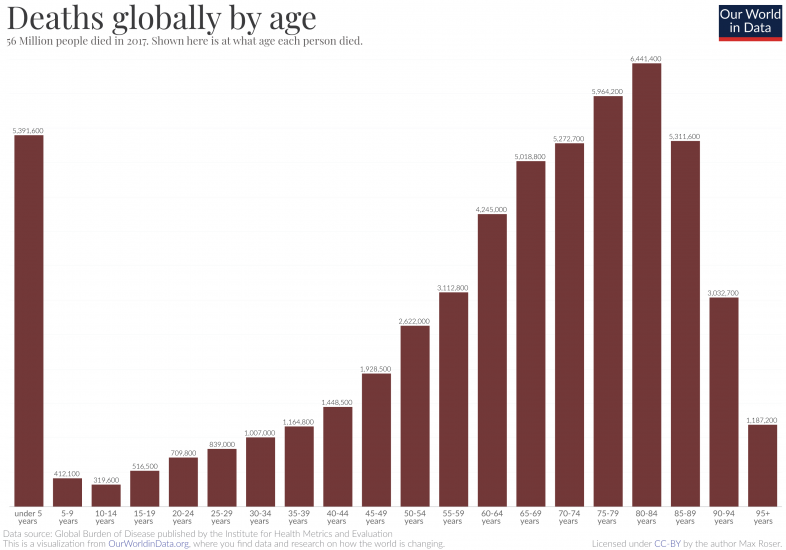56 million people in the world died in 2017. How old were they when their lives ended?
The answer can be seen in the bar chart. It shows all deaths in the world by age in five-year age groups, starting with the youngest on the left towards the oldest age group (95+ years) on the right.
What stands out is the death toll for the very youngest age-group. 5.4 million children died before they had their fifth birthday. On any average day, that’s 15,000 young children.
The suffering and dying of children remains immense, yet these daily tragedies continue without receiving the attention this injustice deserves. A comparison of the tragedy of child deaths with those tragedies that do receive public attention puts it in perspective. A large jumbo jet can carry up to 620 passengers.1
The number of child deaths is that of 24 jumbo jet crashes, with only children on board, every single day.
Single events – such as plane crashes – always make the headlines. Daily tragedies – even the worst ones like the deaths of thousands of children – never make the headlines.
Every case of a family losing a child is a tragedy, regardless of how common or uncommon the cause. Spectacular events that grab global attention in the media are not more important than everyday human suffering. But unfortunately this is not how our minds and our media work. What we focus our attention on are either the spectacular tragedies (natural disasters, terrorist attacks, crime) or new problems (fake news, risks from automation). The first category keeps the breaking news cycle running, the second category keeps the op-ed writers employed. But in many aspects the biggest threats to our lives are the same threats that all the generations that came before us have faced. And this seems unfortunately to be true for what kills children around the world; it’s neither new nor spectacular.
A newspaper that would cover the most important facts about the last 24 hours would cover the 15,000 child deaths on its cover page every day.
In our entry on child mortality we focus on this topic in depth. We ask how the mortality of children has changed over time – globally, by world region, by country, and for different groups within countries. We answer what causes the deaths of children and what reduces the risk of death.
